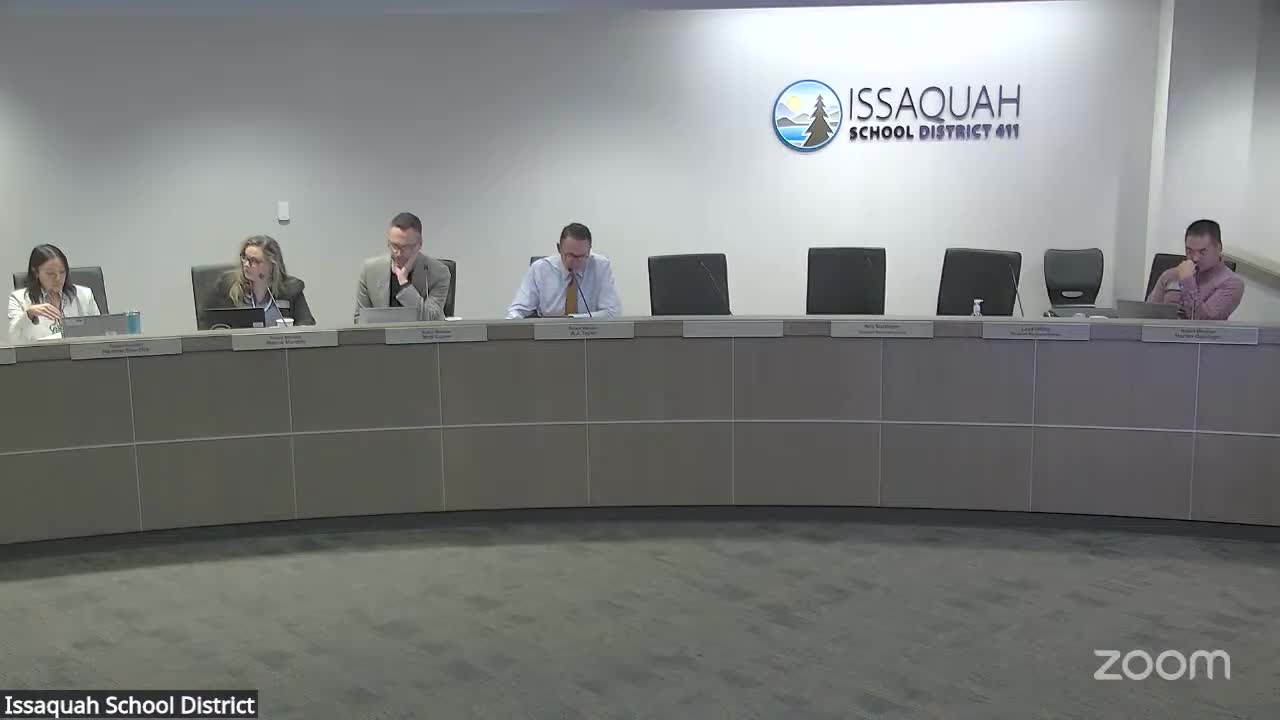Board accepts OE‑2 monitoring report; staff cite strong safety and belonging data but note a data breach exception
October 10, 2025 | Issaquah School District, School Districts, Washington
This article was created by AI summarizing key points discussed. AI makes mistakes, so for full details and context, please refer to the video of the full meeting. Please report any errors so we can fix them. Report an error »

The Issaquah School Board on Oct. 9 accepted the monitoring report for Operational Expectation 2 (treatment of people), which examines how the district ensures dignified treatment, safety and family engagement across its schools. Staff reported overall compliance with OE‑2 but cited a single data-security incident last spring as an exception.
Jacqueline Downey, assistant superintendent, told the board that multiple data sources show students report ‘‘strong feelings of safety, belonging, and respect’’ in district surveys and that elementary students in particular reported high levels of emotional support and safety. Downey said the district’s review found the district ‘‘in compliance with OE‑2 with one exception related to monitoring and controlling student access to electronically distributed information due to a data breach last spring.’’ The breach involved a staff document that contained student information; the district said it contained the incident quickly and notified affected families in accordance with state law.
Survey results and board questions
Staff noted higher participation in the district’s soft-skill survey this year for middle and high schools and said that will improve the reliability of trend data going forward. Some board members asked staff to disaggregate results by school after noticing variations in some survey items: for example, one board member flagged a decline in middle-school students’ sense of belonging and asked staff to examine building-level differences.
Board action
A board motion to accept the OE‑2 monitoring report passed by voice vote. Directors commended the district’s family-engagement structures and student-panel work while asking for follow-up on a few items, including further analysis of the belonging measures and parent-perception data.
Context and next steps
Staff said they will follow up by reviewing school-level disaggregation for items that show declines, and by exploring ways to measure parent perceptions of engagement more directly. The district also said it is improving survey methods and will report additional findings as new data (for example, the Healthy Youth survey) become available.
Jacqueline Downey, assistant superintendent, told the board that multiple data sources show students report ‘‘strong feelings of safety, belonging, and respect’’ in district surveys and that elementary students in particular reported high levels of emotional support and safety. Downey said the district’s review found the district ‘‘in compliance with OE‑2 with one exception related to monitoring and controlling student access to electronically distributed information due to a data breach last spring.’’ The breach involved a staff document that contained student information; the district said it contained the incident quickly and notified affected families in accordance with state law.
Survey results and board questions
Staff noted higher participation in the district’s soft-skill survey this year for middle and high schools and said that will improve the reliability of trend data going forward. Some board members asked staff to disaggregate results by school after noticing variations in some survey items: for example, one board member flagged a decline in middle-school students’ sense of belonging and asked staff to examine building-level differences.
Board action
A board motion to accept the OE‑2 monitoring report passed by voice vote. Directors commended the district’s family-engagement structures and student-panel work while asking for follow-up on a few items, including further analysis of the belonging measures and parent-perception data.
Context and next steps
Staff said they will follow up by reviewing school-level disaggregation for items that show declines, and by exploring ways to measure parent perceptions of engagement more directly. The district also said it is improving survey methods and will report additional findings as new data (for example, the Healthy Youth survey) become available.
View full meeting
This article is based on a recent meeting—watch the full video and explore the complete transcript for deeper insights into the discussion.
View full meeting
